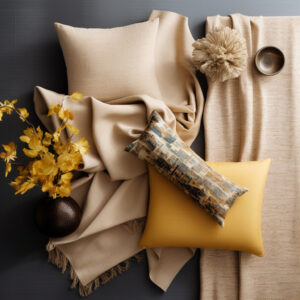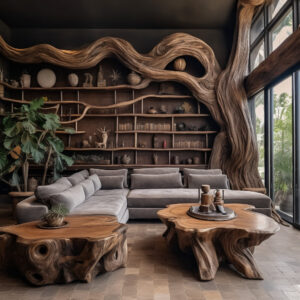Feng Shui Principles for Harmonious Living
Creating a home that is not only visually stunning but also exudes serenity and balance is an art—a subtle dance between aesthetics and energy. The ancient Chinese practice of Feng Shui has captivated homeowners and designers alike, offering a path to spaces that support wellness and promote positive flow. In embracing Feng Shui principles, we find the key to unlocking an environment that nourishes the soul and pleases the senses.
Introduction
Nestled at the heart of interior design is a desire not just to decorate, but to imbue spaces with an ambiance that enhances daily living. At the convergence of beauty and functionality, Feng Shui emerges as a transformative philosophy. It underscores the importance of aligning our living spaces with the natural world, promoting harmony, and optimizing the flow of chi, or life energy, throughout the home. From the way sunlight filters into your living room to the placement of furniture, Feng Shui intertwines with the very fabric of interior design, making the intangible tangible.
Key Elements
When navigating the world of interior design, there are several foundational elements to consider that align well with Feng Shui principles:
- Element 1: Color Palettes – Colors significantly impact emotions and energy within a space. Feng Shui recognizes this, advocating for hues that complement the intended mood of each room. Soft blues and greens can evoke tranquility, while warmer tones might stimulate conversation and appetite in social spaces like the kitchen and dining room.
- Element 2: Furniture Arrangement – The placement of furniture is crucial in defining flow and harmony. Feng Shui emphasizes the 'command position’ for key pieces, positioning them in a way that allows for the widest view of the room and promotes a sense of security and control.
- Element 3: Lighting – Light influences the chi within a space. Natural lighting is preferred, supported by layered artificial lighting that can be adjusted to suit different times of the day and various activities.
-
Element 4: Accessories – Decorative elements should resonate with the personal energy of the inhabitants. Feng Shui encourages the use of mirrors, plants, and art to enhance chi flow and reflect personal style, but cautions against clutter which can stagnate energy.
Tips for Feng Shui Principles
Selecting furniture that not only fits the physical dimensions of a room but also enhances its energy can be guided by the following Feng Shui tips:
- Size Matters:
- Choose pieces that are proportionate to the space. Overly large furniture can overwhelm, while too-small items can create a sense of incompleteness.
- Functional Aesthetics:
- Opt for furniture that serves a purpose while adding aesthetic value. Each item should support daily activities and contribute to the overall harmony of the room.
- Balancing Shapes:
- Incorporate various shapes—round tables, rectangular sofas, oval rugs—to balance the room’s energy. This variety can stir up the flow of chi and create an engaging environment.
- Material Considerations:
- Select materials that ground the space (like wood or earth elements) or add lightness and airiness (like glass or metal), depending on the needs of the room’s energy balance.
FAQ about Feng Shui Principles
Question 1: How do I apply Feng Shui principles if I have a small living space?
– Answer: Even in small spaces, Feng Shui can be impactful. Focus on clutter reduction, multipurpose furniture, and mirrors to expand the perception of space. Emphasize vertical storage and keep pathways clear to promote energy flow.
Question 2: Can Feng Shui principles help improve my sleep?
– Answer: Absolutely. For better sleep, position your bed in the command position, employ soothing colors, remove electronic distractions, and incorporate calming scents or textiles to create a restful haven.
Question 3: Are there specific colors I should use in my home office to boost productivity?
– Answer: In a home office, colors like pale blue can stimulate the mind, greens promote balance, and subtle yellows inspire creativity. Avoid overly bold colors that might distract or cause restlessness.
Question 4: How do plants contribute to the Feng Shui of a room?
– Answer: Plants embody the wood element, promoting growth and vitality. They can soften corners, act as natural air purifiers, and add life to a space. Ensure the plants are healthy and appropriate for the available light to maintain positive energy.
Question 5: What role do mirrors play in Feng Shui?
– Answer: Mirrors are powerful Feng Shui tools; they can expand a space, reflect beautiful views, and redirect energy. However, they should be used thoughtfully—avoid placing them directly in front of doors or in positions where they reflect conflict or undesirable areas.
Strategically integrating these principles of Feng Shui can transform a home into a sanctuary of repose and vibrancy. Amidst the ever-evolving domain of interior design, the timeless wisdom of Feng Shui continues to guide us towards spaces that resonate with our deepest sense of harmony and joy. By tending to the energy of our environment, we cultivate places where life can flourish—a testament to the profound connection between our surroundings and our inner wellbeing.




